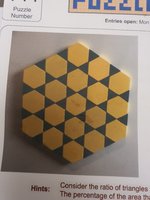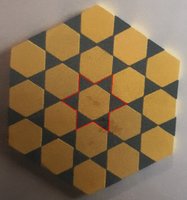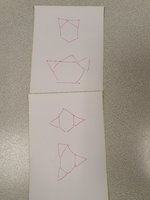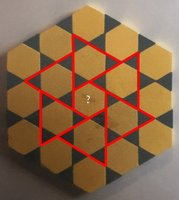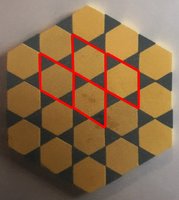Hypatia001
New member
- Joined
- Nov 11, 2020
- Messages
- 44
Hello
So this is my first post !!!
The pattern attached is made of regular yellow haxagons and green equilateral triangles. If the pattern carries on forever in every direction what percentage of the area would be green ??
My thoughts are the answer is zero percent but please help.
Thank you
So this is my first post !!!
The pattern attached is made of regular yellow haxagons and green equilateral triangles. If the pattern carries on forever in every direction what percentage of the area would be green ??
My thoughts are the answer is zero percent but please help.
Thank you

